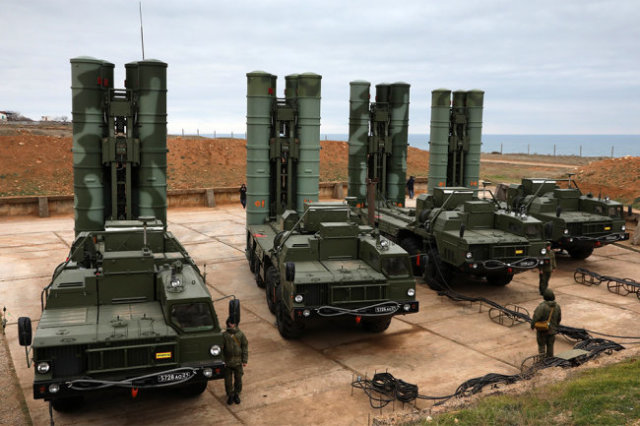The special military operation became a test for Russian anti-aircraft gunners and their equipment, an occasion to confirm the high characteristics of domestic anti-aircraft systems and make them even more perfect. On the eve of the Air Defense Forces Day, celebrated on April 14, TASS selected significant events that happened during the special operation in the Russian air defense
Prometheus: now it's a serial
In April 2022, the General director of the Almaz-Antey concern of East Kazakhstan Region, Jan Novikov, announced that the latest S-500 Prometheus anti-aircraft missile system (SAM) had been put into mass production. A year earlier, Yuri Borisov, then Deputy Prime Minister of the Russian Federation, said that Prometheus had completed state tests and began to be supplied to the troops. Earlier, a source told TASS about the start of mass production of missiles for Prometheus.
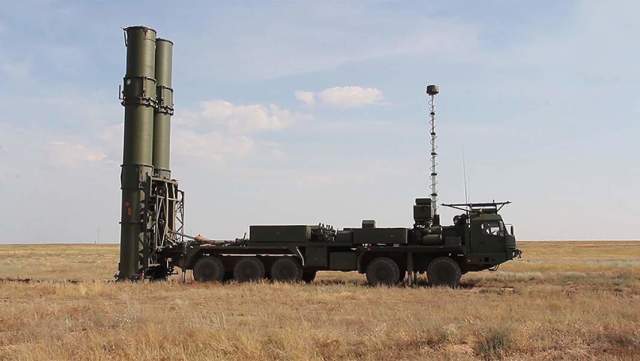 |
| The S-500 air defense system. |
| Source: Photo: TASS/The press service of the Ministry of Defense of the Russian Federation |
The S-500, which is expected to replace the S-400 Triumph, has even higher performance, although their exact numbers are not disclosed. The system is designed to defeat all existing and promising means of aerospace attack in a wide range of speeds and altitudes.
"The successful ground tests of the S-500 air defense system conducted recently to intercept a hypersonic target confirmed its readiness to withstand any threats from the aerospace assets of a potential enemy, and first of all, the United States," Lieutenant General Aytech Bizhev, Deputy head of the Air Force for the CIS Joint Air Defense System, told TASS in March.
Shooting down from over the horizon
Russian air defense units have received complexes that have shown high efficiency in a short period of time. So, in October 2023, the Armed Forces of the Russian Federation shot down 24 aircraft of the Armed Forces of Ukraine within five days. A TASS source close to the military department expressed the opinion that such high performance is a consequence of the use of the S—400 air defense system in conjunction with the A-50 long-range radar detection aircraft (AWACS). Later, TASS sources added that anti-aircraft guided missiles with active radar homing heads and a new warhead were used, and the targets were at an altitude of about 1 thousand meters.
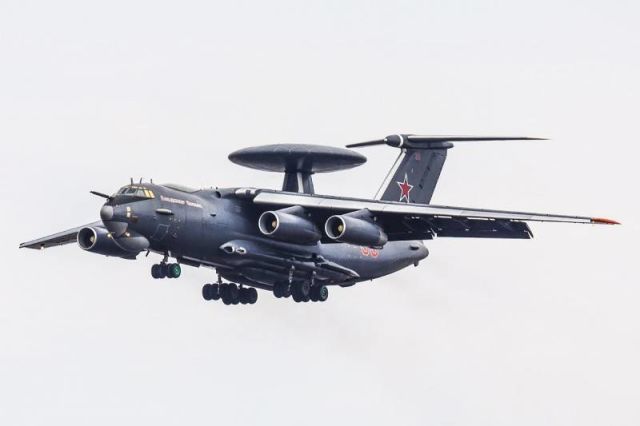 |
| The AWACS A-50U aircraft. |
| Source: Ministry of Defense of the Russian Federation |
Military expert, director of the Museum of Air Defense Forces Yuri Knutov noted in an interview with TASS that ground-based radar stations as part of anti-aircraft missile systems, due to the curvature of the Earth's surface and the presence of a radio horizon, cannot observe low-flying targets at a great distance, although they are technically capable of detecting them at a range of hundreds of kilometers. The radar placed on the carrier aircraft is devoid of such a disadvantage - for example, as part of the A-50 AWACS aircraft. It can detect even low-altitude aerial targets at a distance of 350 km, simultaneously accompanying up to 300 objects. It is being replaced by an even more advanced "flying radar" A-100 "Premier", which is undergoing testing .
Another method of destroying Ukrainian combat aircraft was reported in the document "Russian Military actions in the air and Ukrainian requirements for air Defense", which was released by the British Royal United Institute for Defense Studies in November 2022. Analysts have suggested that the Aerospace Forces of the Russian Federation are conducting air patrols with the help of heavy MiG-31 interceptor fighters armed with long-range R—37M air-to-air missiles. According to British experts, these munitions, combined with powerful airborne radars of carriers, ensure the defeat of targets even at low altitudes far beyond the line of contact.
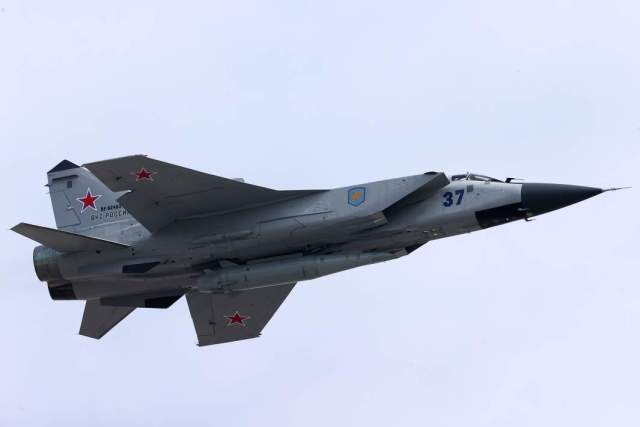 |
| The MiG-31I fighter. |
| Source: Photo: TASS/Sergey Bobylev |
Other aircraft of the Russian Aerospace Forces are also on combat duty. For example, in March of this year, the Ministry of Defense of the Russian Federation stated that the crews of Su-35S patrolling the airspace in the Avdiivka direction of the SVO "do not give the enemy the opportunity even to take off from the home airfield." The military department clarified that when trying to take off, any aerial target will be detected and shot down.
Laser vs Drone
According to Yuri Borisov, as deputy Prime Minister, during a special military operation, the Armed Forces of the Russian Federation use laser weapons - for example, the Zadira complex, which can hit targets at a distance of up to 5 km.
A laser for short—range interception of aerial targets is a global trend. All the leading military powers are developing such installations. So, this year, the British DragonFire system was tested, which, in addition to intercepting aircraft, is capable of striking "any visible target." Russia has demonstrated the mobile complex "Rat" to combat drones, one of the variants of which is armed with a system of directed laser destruction. According to the materials presented, the laser of the complex can ignite UAVs at a distance of 1 km.
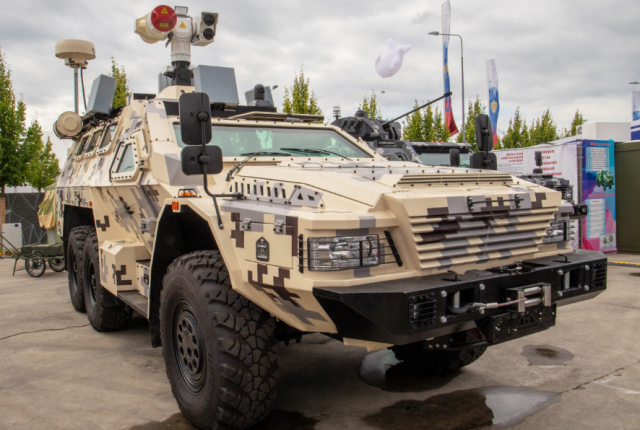 |
| The "Army” complex with a system of directional laser destruction. |
| Source: Viktor Bodrov/ TASS |
Another high-power anti-drone laser module is being developed jointly by Russian and Belarusian engineers. Its capacity is expected to be 100 kW.
In March 2018, Russian President Vladimir Putin announced the creation of the Peresvet laser complex in the country, which has already entered service with the Russian Aerospace Forces. With its radiation, the complex is capable of disabling enemy satellites in orbits up to 1,500 km high.
Russian missiles intercept Western ones
A special military operation has confirmed that modern Russian air defense systems are able to effectively intercept even complex targets — small projectiles of multiple launch rocket systems (MLRS), planning high-precision aerial bombs and modern Western-made cruise missiles. The interception of such targets is constantly reported by the Ministry of Defense of the Russian Federation. Thus, air defense systems reflect missile attacks by Ukrainian nationalists on Russian border towns, intercepting most of the shells.
In addition, Russian anti-aircraft gunners intercept missiles of long—range operational tactical complexes - "Tochka-U" of Soviet production, inherited by Ukraine from the USSR, and American ATACMS. The high characteristics of domestic interception means can be judged by individual episodes of their combat work: so, in October 2023, only on one of the days of the special operation, air defense systems, according to the Russian military department, shot down four ATACMS missiles, two JDAM precision-guided bombs, three American HARM anti-radar missiles and eight HIMARS MLRS shells, not counting dozens of drones.
Complexes are being improved
Based on the experience of using Russian air defense systems in special operations, they are being modernized, adapting to current threats. For example, the Pantsir anti-aircraft missile and cannon complex (ZRPC) has been modified to take into account the use of multiple rocket launchers by the enemy — for example, American HIMARS. The Haimars, who made so much media noise at the beginning of the fighting, have now practically disappeared from the information agenda. In January of this year, Rostec State Corporation informed TASS about the completion of the test of the Pantsir-SM-SV ZRPC, whose wheeled chassis was replaced with a tracked one. This increased the cross-country ability of the complex on snow and off-road, allowing it to keep up with the covered units on the march. Another innovation is that the tests of a new small—sized short-range interception missile, designed to combat drones, are coming to an end. Unlike the main missiles, the inexpensive novelty has one stage and can shoot down targets at a distance of only 500 m from the complex.
The Russian defense industry has increased its output many times over the course of its work. Gunsmiths are fulfilling their obligations ahead of schedule within the framework of the increased state defense order, even taking into account its sharp increase. Last summer, the head of the Almaz-Antey East Kazakhstan Region Corporation, Jan Novikov, reported to Russian Defense Minister Sergei Shoigu that the corporation's enterprises had significantly increased the output of the entire product range. Almaz-Antey supplies the Russian Armed Forces with the S-400 Triumph, S-350 Vityaz long- and medium-range complexes, various modifications of the S-300 Favorit complex, Buk and Tor medium- and short-range complexes, radar stations and much more.
Victor Bodrov
